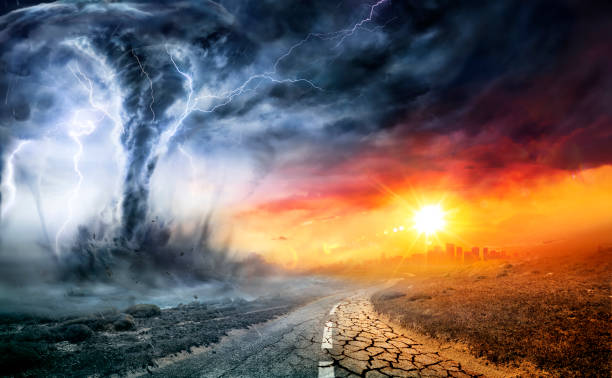Weathering the Storm: Climate Change and Its Impact on Home Insurance

As the climate continues to change, insurance companies are facing new challenges, leaving homeowners to deal with the repercussions.
Rising Risk: Extreme Weather Events
One of the most direct impacts of climate change on homeowners insurance is the increase in extreme and unpredictable weather patterns. Hurricanes, wildfires, floods, and tornadoes are becoming more frequent and severe due to rising global temperatures. The National Oceanic and Atmospheric Administration reported a record-breaking 28 weather and climate disasters across the country in 2023 – between 1980 and 2023, the annual average was 8.5. These disasters cause extensive damage to properties, leading to a surge in insurance claims.
Insurance companies operate on the principle of risk assessment. As the frequency and intensity of extreme weather events rise, so does the risk of property damage. Consequently, insurers face higher payouts, prompting them to reassess their coverage policies and premiums.
Changing Coverage Policies
This changing risk landscape is prompting insurers to raise their premiums or pause coverage altogether in high-risk areas, influencing the affordability and availability of home insurance. As a result, consumers nationwide are inheriting high premiums, even if they don’t live in areas prone to natural disasters.
Additionally, insurers are incorporating climate risk models into their underwriting process. These models assess the vulnerability of properties to climate-related hazards, allowing insurers to adjust premiums accordingly. As a result, homeowners in high-risk areas may find it increasingly challenging to obtain affordable coverage that adequately protects their property.
Premium Increases
With the escalating frequency and severity of weather-related disasters, insurance companies are compelled to raise premiums to maintain profitability. Homeowners in at-risk areas are bearing the brunt of these increased premiums. For some, the inflated cost of insurance can strain their budgets or even make homeownership unattainable.
Furthermore, insurers may resort to non-renewal or cancellation of policies for properties deemed too risky to insure. This leaves homeowners scrambling to find coverage or facing the prospect of being uninsured in the face of potential disasters.
Mitigation and Adaptation
While the outlook may seem bleak, there are steps homeowners can take to mitigate the impact of climate change on their insurance premiums. Investing in resilient home features such as storm shutters, reinforced roofing, and flood barriers can lower the risk of damage and potentially reduce insurance costs.
Climate change is not just an environmental issue—it’s a pressing concern that affects various aspects of our lives, including homeowners insurance. As extreme weather events become more frequent and severe, insurers and homeowners alike must adapt to the new reality of heightened climate risks. By embracing resilience and sustainability, we can weather the storm of climate change and build a more secure future for all.
